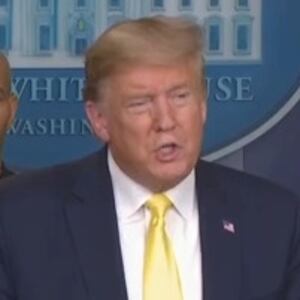OPEC+’s announcement of a price war and escalating concerns about the novel coronavirus set off such severe declines in the stock markets that trading on the New York Stock Exchange was halted for 15 minutes on Monday morning just after 9:30 a.m.
At Monday’s closing bell, it officially became one of the worst days in the markets’ history, with the Dow falling by more than 2,000 points or 7.8 percent, the S&P 500 and Nasdaq Composite plunging by more than 7 percent each, and the energy sector falling by 20 percent.
The spread and treatment of the highly infectious new respiratory virus, which causes a disease known as COVID-19, has been an increasing health concern worldwide as the number of cases has passed 100,000 and spread to more than 90 countries. However, the impact on U.S. businesses and the financial markets only became clear a few weeks ago, then quickly accelerated in the country after more cases were confirmed in several states.
ADVERTISEMENT
Global supply chains for everything from complicated technology products to clothing and plastic toys experienced the first pressure points from COVID-19 after operations at manufacturing facilities in China were suspended during mass quarantines in several major cities. This was accompanied by declines in Chinese demand for clothing, travel, luxury goods, movies, high-end dining, and electronics. Then, at the end of last month, both the Dow Jones Industrial Average and the S&P 500 recorded major declines during several consecutive trading days.
The stock market is not the economy, but investors have been selling shares and fleeing to government bonds, gold, and short-term Treasury bills amid real fears that a global recovery from the effects of COVID-19 will take much longer than previously expected. In more prosperous times filled with growth and global demand, the crash in oil prices would mean low prices and reduced expenses for trucking, airline, energy, and manufacturing companies. Groceries, trade, and tourism industries would also benefit.
But the crash happened after China’s demand fell during its quarantines—when airlines reduced routes, transport ships and trucks stopped moving goods, and the production of millions of plastic items were halted, all to help prevent the further spread of the coronavirus.
Even as a limited number of manufacturing facilities in China restart production, citizens return to low-risk areas, and demand for oil slowly returns in the country, worldwide demand for oil has fallen due to politicians and residents in other countries implementing quarantines and social distancing policies, as well as other efforts to reduce the spread of the virus through movement and public interaction.
Social distancing policies include 16 million Japanese children being kept home from school for a month. On Monday, Italian Prime Minister Giuseppe Conte announced the entire country would adopt the lockdown and social distancing rules that were implemented on Sunday in the northern region of Lombardy after Italy recorded 463 deaths and more than 9,000 coronavirus cases. In South Korea, 30,000 people are under self-quarantine, many of them using an app to report their symptoms and provide updates to government officials.
In the U.S., companies like IBM, JPMorgan Chase, and Amazon are suspending “non-essential” international and domestic travel, large conferences like SXSW are being canceled, and work-from-home policies are being implemented across organizations and changing cities like Seattle. Consumers are canceling trips abroad and rushing to stock up on hand sanitzer and staples like toilet paper and canned goods. Government officials in California, Washington, and New York are implementing precautionary and preventive measures aimed at reducing exposure and further spreading of the virus, especially for the elderly and individuals with compromised immune systems.
It’s also worth noting that even after President Trump and top US officials said 1 million to 1.5 million tests for COVID-19 would be available, on Monday the CDC acknowledged that its real supply was significantly lower, saying it had just 75,000 tests across 78 state and local public health labs. Trump economic adviser Larry Kudlow has also provided information that is contradictory to that of financial experts.
A payroll tax cut announced by Trump on Monday evening or tax relief to the airline, travel, and cruise industries will also not undo the damage from closing the Directorate for Global Health and Security in 2018 or help tackle institutional issues that will make treating the virus more difficult. These include a national lack of sick leave, the high cost of health care even with insurance, the millions of kids dependent on free school lunches distributed at schools, misinformation about treatments like drinking bleach rapidly spreading online, and the lack of health care resources in rural areas.
COVID-19 exposed the weaknesses in the global economy, as well as America’s vulnerability and lack of preparation for a health crisis of this magnitude. Investors realized the 11 years of growth had finally come to an end for the near future and sought safety. It will be extremely difficult to predict how small and large businesses might recover from this period and how long this economic shutdown will extend into the year, including its effect on the Summer Olympics in Japan and the November presidential election. Effectively dealing with COVID-19 will require significant changes in fiscal policies, government health care policies, labor rights, and cultural behaviors, as well as how the U.S. fundamentally deploys and manages health services at both the state and national level. This is something the president can’t fix or solve with a tweet.







